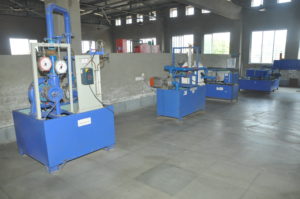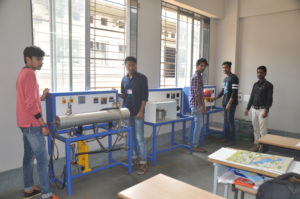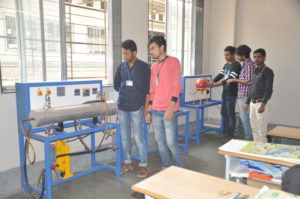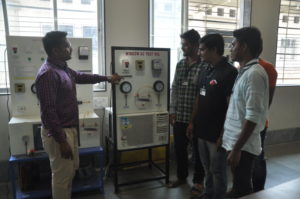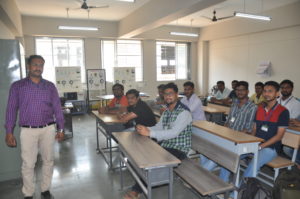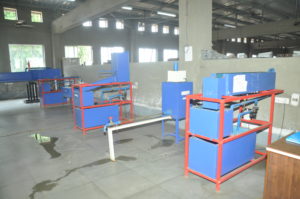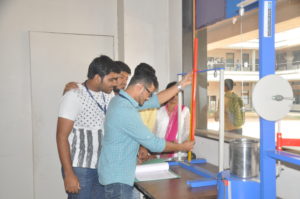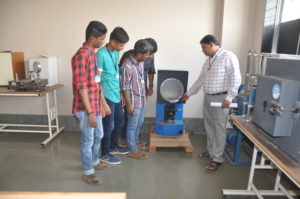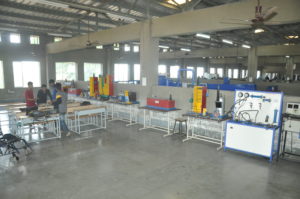DEGREE IN MECHANICAL ENGINEERING
VISION
- The Mechanical Engineering Department aims to be recognized for outstanding education and research leading to well qualified engineers, who are innovative, entrepreneurial and victorious in advanced fields of mechanical engineering to cater the ever changing industrial demands and social needs.
MISSION
- To impart highest quality education to the students for enhancing their skills to make them competitive mechanical engineers.
- To provide the students with academic environment of excellence, leadership, ethical guidelines and lifelong learning needed for a long productive career.
- To develop alliances with R&D organizations, educational institutions, industry and alumni for excellence in teaching, research and consultancy practices.
PROGRAM EDUCATIONAL OBJECTIVES
- PEO1- Demonstrate expertise in mechanical engineering for solving real life problems with due respect for the principles of sustainable development.
- PEO2- Pursue higher education, research or entrepreneurship and be ethical in all his endeavors
- PEO3- Engage in lifelong learning and exhibit team work, leadership and communication skills to evolve as successful professional.
PROGRAM OUTCOMES
- Engineering knowledge: Apply the knowledge of mathematics, science, engineering fundamentals, and an engineering specialization to the solution of complex engineering problems.
- Problem analysis: Identify, formulate, review research literature, and analyze complex engineering problems reaching substantiated conclusions using first principles of mathematics, natural sciences, and engineering sciences.
- Design/development of solutions: Design solutions for complex engineering problems and design system components or processes that meet the specified needs with appropriate consideration for the public health and safety, and the cultural, societal, and environmental considerations.
- Conduct investigations of complex problems: Use research-based knowledge and research methods including design of experiments, analysis and interpretation of data, and synthesis of the information to provide valid conclusions.
- Modern tool usage: Create, select, and apply appropriate techniques, resources, and modern engineering and IT tools including prediction and modeling to complex engineering activities with an understanding of the limitations.
- The engineer and society: Apply reasoning informed by the contextual knowledge to assess societal, health, safety, legal and cultural issues and the consequent responsibilities relevant to the professional engineering practice.
- Environment and sustainability: Understand the impact of the professional engineering solutions in societal and environmental contexts, and demonstrate the knowledge of, and need for sustainable development.
- Ethics: Apply ethical principles and commit to professional ethics and responsibilities and norms of the engineering practice.
- Individual and team work: Function effectively as an individual, and as a member or leader in diverse teams, and in multidisciplinary settings.
- Communication: Communicate effectively on complex engineering activities with the engineering community and with society at large, such as, being able to comprehend and write effective reports and design documentation, make effective presentations, and give and receive clear instructions.
- Project management and finance: Demonstrate knowledge and understanding of the engineering and management principles and apply these to one’s own work, as a member and leader in a team, to manage projects and in multidisciplinary environments.
- Life-long learning: Recognize the need for, and have the preparation and ability to engage in independent and life-long learning in the broadest context of technological change.
PROGRAM SPECIFIC OUTCOMES
- PSO1 – Graduates will be able to apply mathematical and fundamental engineering skills for solving problems in mechanical engineering in day to day practice.
- PSO2 – Graduates will be able to think and apply appropriate techniques, resources and modern engineering tools in the field of mechanical engineering.
- PSO3 – Graduates will be able to use the engineering and management principles for one’s own work, as a member and leader in a team, to manage projects and in multidisciplinary environments.
About Us
Mechanical Engineering is the broadest and most diverse of engineering discipline .It design and manufacture everything from small individual parts and devices to large systems.
The role of mechanical engineer is to take the product from an idea to the marketplace. In order to accomplish this, a broad range of skills are needed. He/she needs to design them for functionality, aesthetics, and the ability to withstand the forces and the thermal environment they will be subjected to; and to determine the best way to manufacture them and ensure they will operate without failure.
The mechanical engineer’s exclusive domain is the ability to analyze and design objects and systems with motion.
Mechanical engineers learn about materials, solid and fluid mechanics, thermodynamics, heat transfer, design, and manufacturing to understand mechanical systems.
The breadth of the mechanical engineering discipline allows students a variety of career options. Mechanical engineers play a central role in industries such as automotive ,aerospace ,power generation ,biotechnology, computers, electronics and electro-mechanical systems,
Lab Details
| Sr. No. | Name of Laboratory | Practical’s related subject | Class Branch – Sem | Name of Instruments/ Experiment Setup | Lab Pics |
| 1. | CAD-CAM/ FEA LAB | CAMD | SE Mech – III |
| 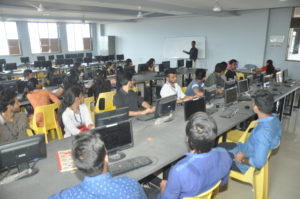 |
| FEA | TE Mech – VI |
|  | ||
| 2. | ENGINEERING MECHANICS | Engineering Mechanics | FE All Branches |
|
|
| 3. | HEAT & MASS TRANSFER | Heat & Mass Transfer | TE Mech – V |
|
|
| 4 | INTERNAL COMBUSTION ENGINE | Internal Combustion Engine | TE Mech – V |
|
|
| 5. | MATERIALS TECHNOLOGY LAB | Material Technology | SE Mech – III |
|
|
| 6. | MECHANICAL VIBRATIONS | Mechanical Vibration | TE Mech VI |
|
|
| 7. | MECHANICAL MEASUREMENT & CONTROL | Mechanical Measurement & Control | TE Mech V | Vernier Caliper, Digital Micrometer Outside, Bevel Protector, Slip Gauge, Sine Bar, Surface Plate, Magnetive Block, Feeler Gauge, Radius Gauge, LVDT, Dead Weight Pressure Gauge, Strain Gauge Trainer, Tachometer, Angle Measurement (Sine Bar- 100 M) |
|
| 8. | MECHATRONICS | Mechatronics | TE Mech VI |
|
|
| 9. | REFRIGERATION & AIR-CONDITIONING LAB | Refrigeration & Air conditioning | BE Mech VIII |
| 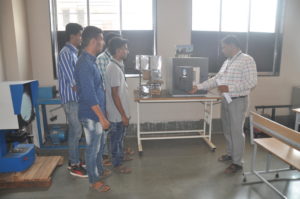 |
| 10. | THERMODYNAMICS & THERMAL ENGG LAB | Thermal Fluid Power Engg | TE Mech VI | Velix Boiler, Lofffler Boiler, Loco Motive Boiler, Babcock And Wilcox Boiler, Lamount Boiler, Benson Boiler, Cronish Boiler, Cochram Boiler, Lancashire Boiler, Vertical Water Boiler, Lever Safety Valve, Spring Loaded Valve, Dead Weight Safety Valve, Water Level Indicator, Feed Check Valve, Steam Injector, Bordon Tube Pressure Gauge, Vacuum Gauge, Fusible Pluge, Anlipring Pipe, Expansion Trap, Float Steap Trap, Super Heater, Green Economizer, Combined High Pressure & Law Safety Valve, Gas Turbine, Bomb Calorimeted Mask Flow Rate Through Orifice Lpate Test Rig |  |
| 11. | THEORY OF MACHINE LAB | Kinematics of Machinery | SE Mech III |
| 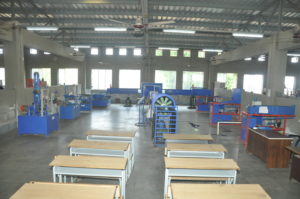 |
| Dynamics of Machinery | TE Mech V | ||||
| 12. | FLUID MECHANICS | Fluid Mechanics | SE MEch III |
| 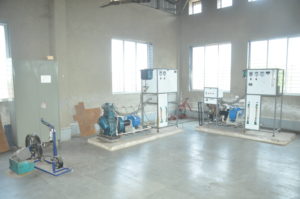 |
Syllabus | Time Table |
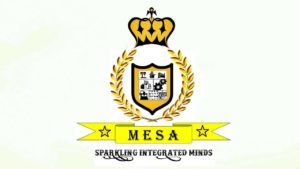
Mechanical Engineering Students Association
Events:
